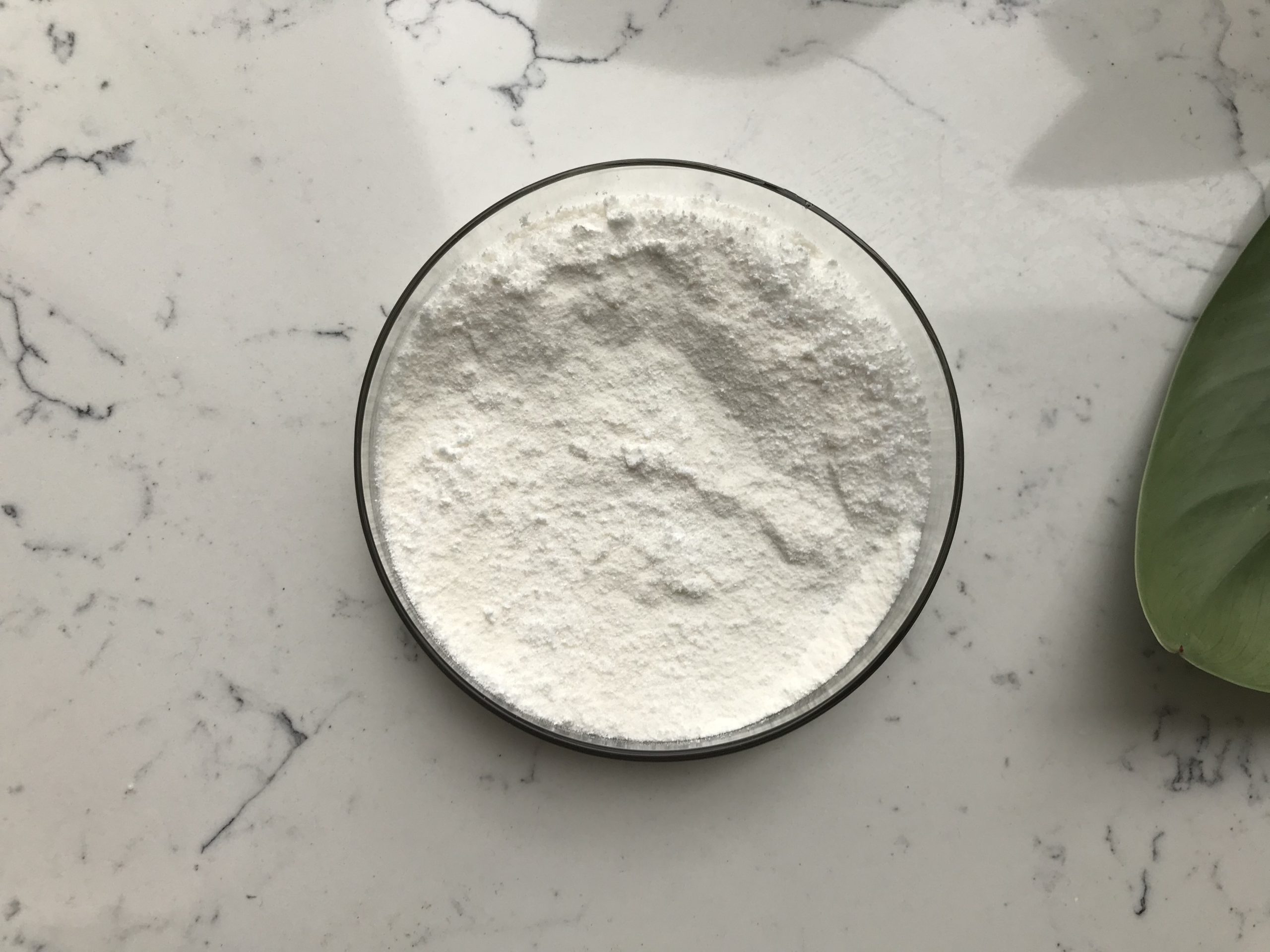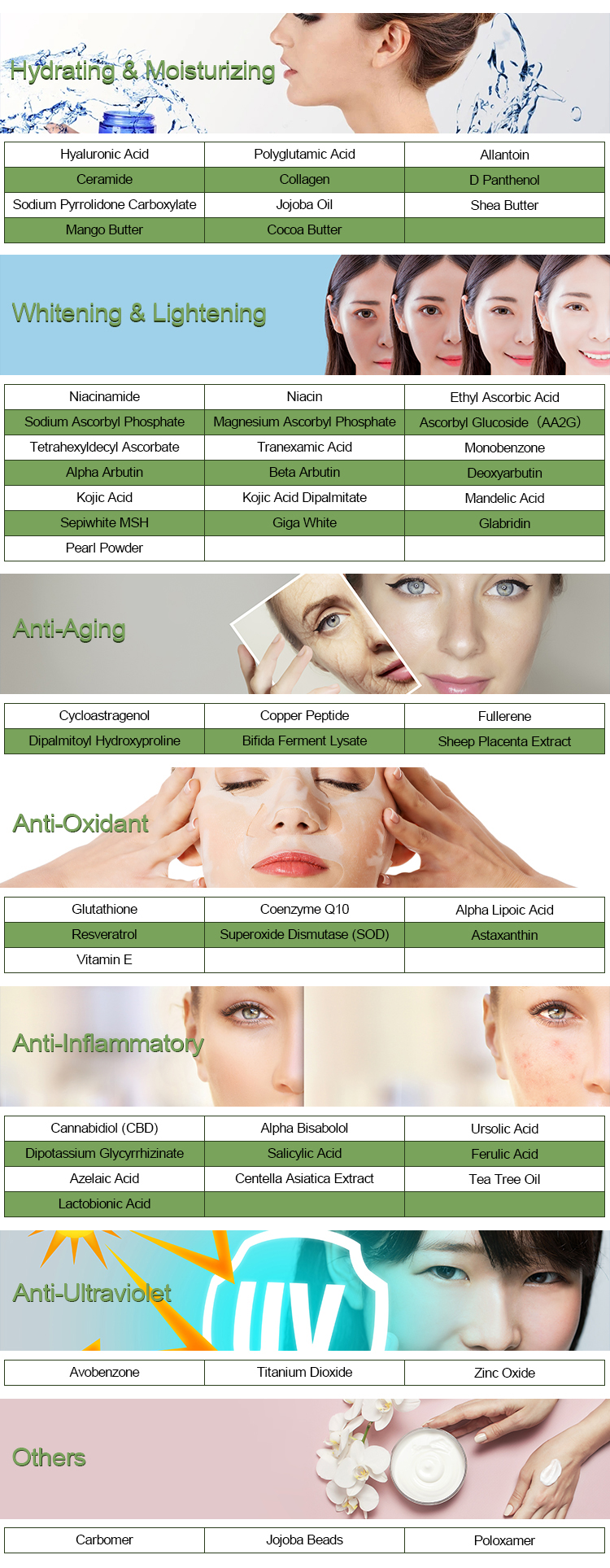Polyglutamic acid (PGA) and hyaluronic acid (HA) are both skincare ingredients commonly found in various beauty products, especially those designed to hydrate and improve the skin’s texture. However, they have different properties and functions. Here’s a comparison of these two ingredients:
1.Structure and Composition:
Polyglutamic Acid (PGA): Polyglutamic acid is a naturally occurring biopolymer made up of repeating units of glutamic acid. It is derived from fermented soybeans and is water-soluble.
Hyaluronic Acid (HA): Hyaluronic acid, also known as hyaluronan, is a naturally occurring substance in the human body. It is a glycosaminoglycan composed of alternating units of N-acetylglucosamine and glucuronic acid. Hyaluronic acid is found in connective tissues, joints, and skin.

2.Hydration:
Polyglutamic Acid (PGA): Polyglutamic acid has a higher water-holding capacity compared to hyaluronic acid, which means it can hold more moisture and provide better hydration to the skin.
Hyaluronic Acid (HA): While Hyaluronic acid is an excellent hydrating agent, Polyglutamic acid outperforms it in terms of water retention and hydration.
3.Skin Barrier:
Polyglutamic Acid (PGA): Polyglutamic acid helps strengthen the skin’s natural barrier, reducing transepidermal water loss (TEWL), and preventing environmental pollutants from penetrating the skin.
Hyaluronic Acid (HA): Hyaluronic acid also contributes to skin barrier function but is primarily known for its ability to attract and retain water, providing a plumping effect.
4.Texture and Application:
Polyglutamic Acid (PGA): Polyglutamic acid is often used in a lightweight, gel-like texture and is suitable for those with oily or combination skin types. It is easily absorbed into the skin.
Hyaluronic Acid (HA): Hyaluronic acid is available in various textures, from lightweight serums to thicker creams. It can be used by individuals with different skin types, and the choice of product depends on personal preferences.
5.Anti-Aging Properties:
Polyglutamic Acid (PGA): Polyglutamic acid may have some anti-aging benefits due to its ability to improve skin hydration, elasticity, and collagen production.
Hyaluronic Acid (HA): Hyaluronic acid is also known for its anti-aging properties as it helps reduce the appearance of fine lines and wrinkles by providing hydration and promoting collagen production.

6.Compatibility:
Polyglutamic Acid (PGA): Polyglutamic acid can be used in combination with other skincare ingredients without significant compatibility issues.
Hyaluronic Acid (HA): Hyaluronic acid is generally well-tolerated and can be used alongside other skincare products. However, it’s essential to be cautious when using it in high concentrations, as it may cause a “pilling” effect when layered with certain products.
In summary, both polyglutamic acid and hyaluronic acid have their unique properties and benefits. PGA is known for its superior hydration capacity and skin barrier reinforcement, making it suitable for those seeking intense moisture. Hyaluronic acid, on the other hand, is a versatile and widely used ingredient known for its hydrating and anti-aging properties. The choice between them may depend on individual skin needs and preferences, and some people may opt to incorporate both into their skincare routine for maximum benefits.
